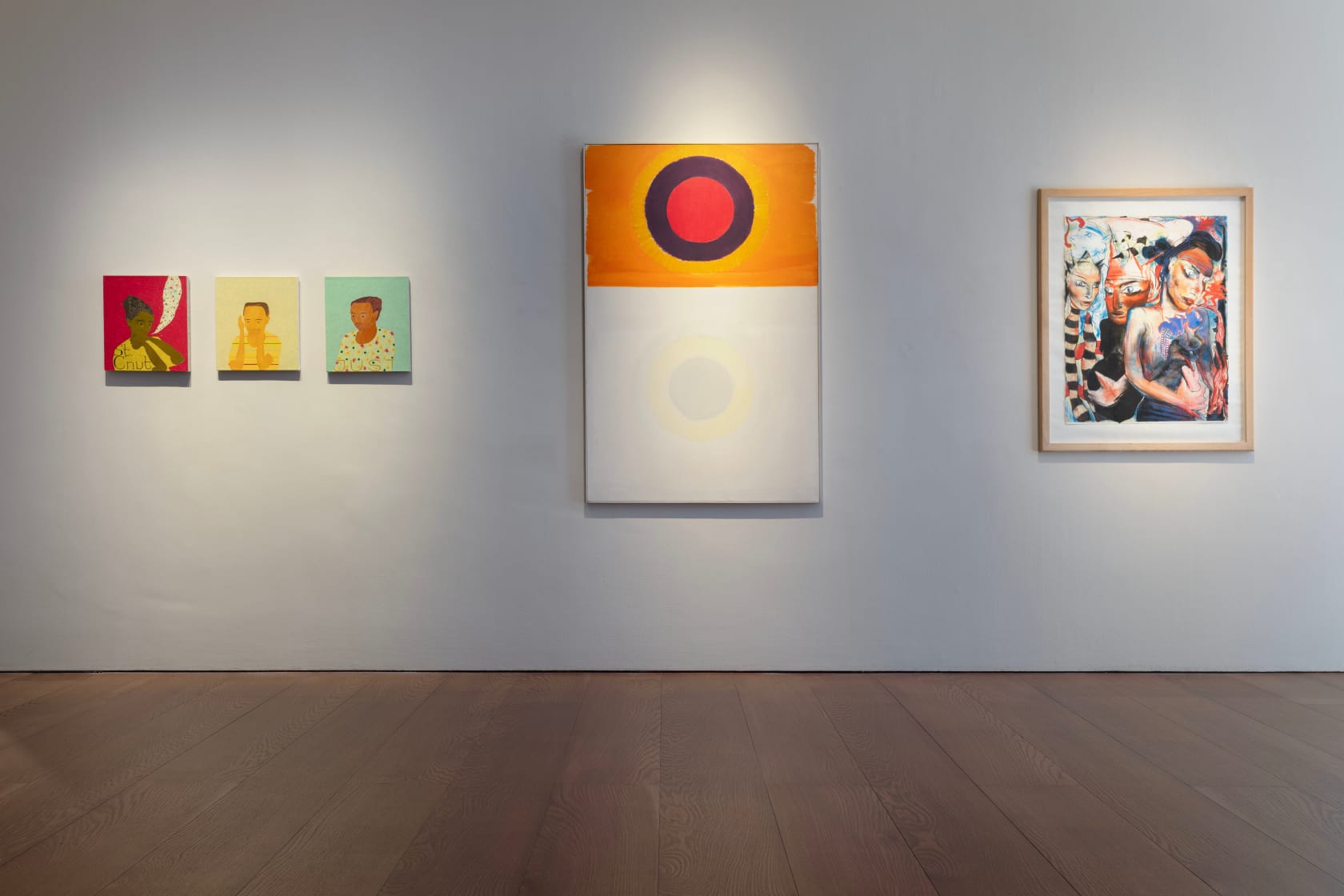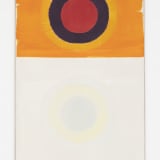


Michael Kidner Orange and White Painting, 1960
60 1/8 x 39 1/8 in
Framed: 154 x 101 cm
60 5/8 x 39 3/4 in
Orange and White Painting, 1960 is an example of Michael Kidner's pursuit of a pure form of imagery and colour and his interest in the "after-image". Divided into two parts, the top of the painting includes concentric circles floating around an orange background. The mirrored circle below reflects the one above, creating an after-image on the retina, producing a visual illusion where one continues to see an image of the object, even when not looking directly at it. The simplicity of its pristine balance within the composition reflected Kidner’s belief that art based on values of rational procedures could unveil the underlying principles of humanity and the fundamental order of the universe.
Michael Kidner RA (1917- 2009), was born in Northamptonshire, UK. He studied History and Anthropology at Cambridge University, UK, and Landscape Architecture in Ohio, USA, before joining the Canadian Army during WWII. After the war, Kidner returned to the United Kingdom and embarked on a career as an artist. His work was first displayed in New York in 1965 in The Responsive Eye at the Museum of Modern Art, a group exhibition that subsequently toured the United States, and then in a solo show at Betty Parsons Gallery, New York, in 1967. During the 1960s, Kidner was associated with the Systems group of artists and was included in an Arts Council touring exhibition of Systems art in 1972–73 that originated at the Whitechapel Art Gallery in London, some of which was displayed at Tate Britain in 2016. A retrospective at the Serpentine Gallery, London, in 1984 introduced a new generation of British artists to his work, and he was elected as a Royal Academician in 2004. A retrospective Love is a Virus from Outer Space took place at Daugavpils Mark Rothko Art Centre, Latvia, in 2021-2022. Kidner's work is represented in public collections including Arts Council England, British Council, Government Art Collection, and Tate, UK; Museum of Modern Art, New York; Calouste Gulbenkian Foundation, Lisbon; and Muzeum Sztuki, Lódz, Poland.


